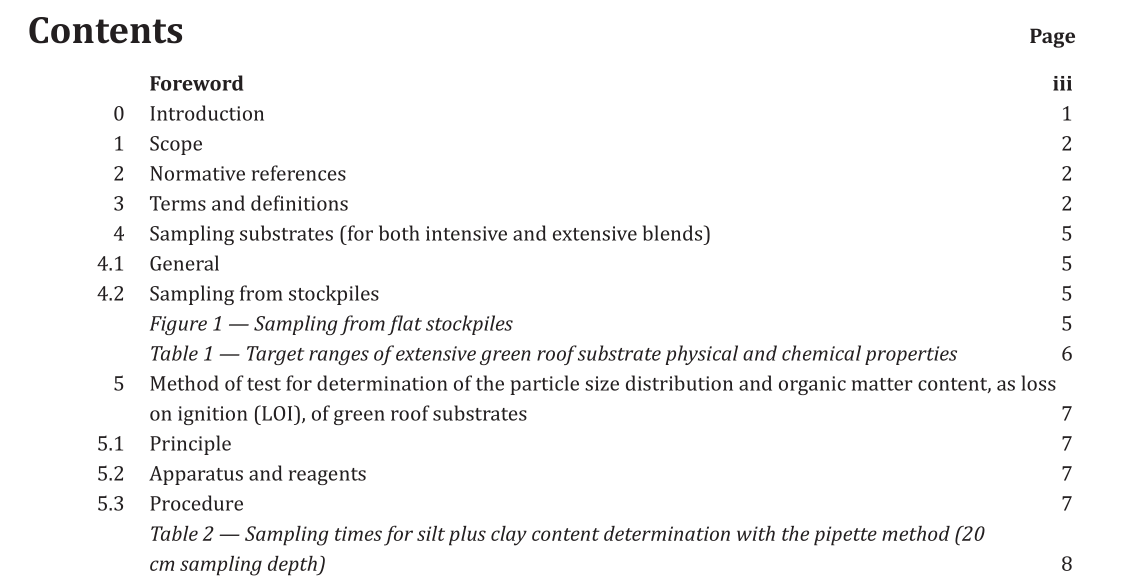BS 8616:2019 pdf download.Specification for performance parameters and test methods for green roof substrates
Green roofs are living systems, reliant on a complex set of factors, including climatic conditions and nutrient and water availability. There are, therefore, many considerations when designing and installing a green roof to achieve the desired green roof habitat, ecosystem service provisions and aesthetic quality. Weight restrictions, installed substrate, planting regimes, as well as the aspect and environment in which a building is located, can limit what is achievable on a green roof. NOTE2 For more information on green roofs, not confined to substrates, see the GRO Green Roof Code [1]. Green roofs have the potential to deliver multiple benefits. These include positive impacts on urban amenity, health and well-being, biodiversity (habitat creation), building energy savings, roof membrane protection, improvements in air quality, urban heat island mitigation and urban flood risk reduction. Many green roof systems incorporate an underlying drainage layer or drainage board below the substrate to ensure that the system is effectively drained. In some instances this layer can also provide sub-surface irrigation to the substrate. Methods to assess the suitability of substrates for this type of system are not dealt with in this standard. NOTE 3 Drainage boards are typically plastic, egg cup, and are also called reservoir boards. Green roofs contribute to urban green infrastructure, which increases the interactions between people and natural habitats. The effects of this are wide-ranging, from encouraging people to undertake physical activity to improving mental well-being through reducing anxiety and improving concentration [2]. In addition, a number of physical stressors, such as air pollution, which are being increasingly shown to have negative impacts on mental health, are also mitigated by green infrastructure, including green roofs [3].
1 Scope
This British Standard specifies requirements for the testing of substrates [the growing medium) for constructed green roofs intended to provide long term support for specified plant communities. This includes extensive and intensive green roof substrates. This British Standard provides methodologies for testing green roof substrates covering the complete application range, and recommended specifications for physical and chemical characteristics considered to be optimal for extensive substrates. This British Standard only addresses methods and parameters to ensure that the substrate used does not become a limiting factor for successful green roof installation. It does not address the wider range of other design considerations, such as the supporting structure, construction, planting options or post-build maintenance. It is recognized that there are green roof systems that do not incorporate a substrate layer and these are not covered in this British Standard.
2 Normative references
The following documents are referred to in the text in such a way that some or all of their content constitutes provisions of this document. For dated references, only the edition cited applies. For undated references, the latest edition of the referenced document (including any amendments) applies.
BS EN 932-1:1997, Tests for general properties of aggregates一Part 1: Methods for sampling
BS 8616:2019 pdf download
